Guest in the House
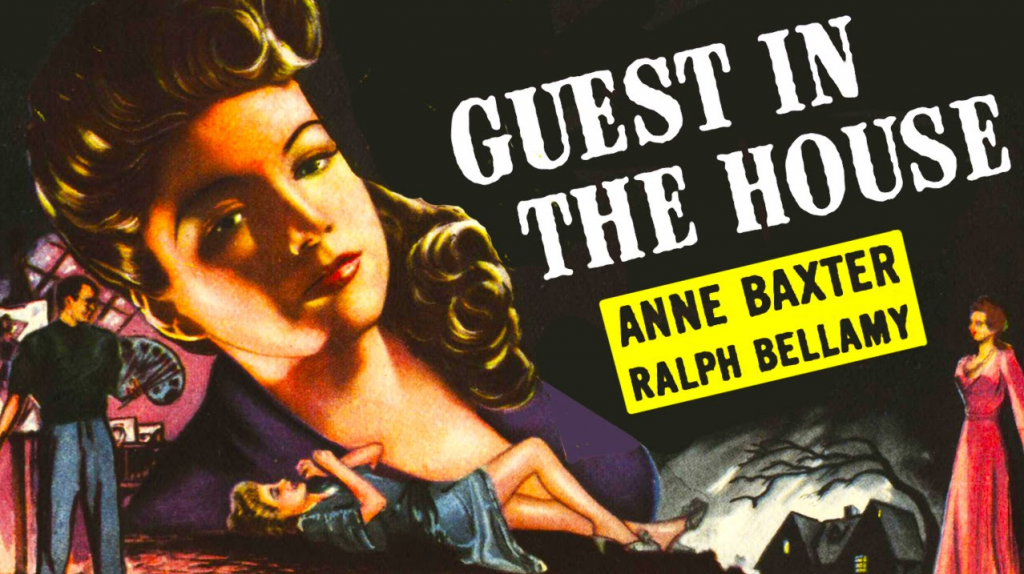
Main Credits
Director: John Brahm. Screenplay: Ketti Frings from the play by Hagar Wilde, Dale Eunson. Producer: Hunt Stomberg (Hunt Stromberg Productions). Director of Photography: Lee Garmes. Music: Werner Janssen. Art Director: Nikolai Remisoff. Editors: Walter Hannemann, James E. Newcom. Costume Designer: Natalie Visart. Cast: Anne Baxter (Evelyn Heath), Ralph Bellamy (Douglas Proctor), Aline MacMahon (Aunt Martha), Ruth Warrick (Ann Proctor), Scott McKay (Dr. Dan Proctor), Marie McDonald (Miriam), Jerome Cowan (Mr. Hackett), Margaret Hamilton (Hilda, the Maid), Percy Kilbride (John, the Butler), Connie Laird (Lee Proctor). Released: United Artists, December 8, 1944. 121 minutes.
From Film Noir: The Encyclopedia
Plot Summary
Evelyn is brought by Dan, who loves her, to the home of his brother’s family so she can recuperate from an unspecified illness. The members of the household are generous, gregarious and gullible. No one suspects that Evelyn, one by one, is causing them to move out. She convinces Dan to finish his medical studies. She gets Lee and Ann to think Douglas, a commercial artist, is having an affair with Miriam, his model. Insulted by the accusation, Miriam leaves. Lee, whose pet bird terrifies Evelyn, starts to imitate Evelyn’s manipulative manner. Finally, Ann learns what Evelyn is up to. Because Douglas won’t believe her, Ann goes away with Lee. Alone together, Evelyn tells Douglas she loves him, and he’s appalled. Douglas reconciles with Ann and brings her and Lee back home. He plans to place Evelyn in a sanatorium. To prevent that, Evelyn calls Dan, and he comes for her. Before they go, she sees Lee’s birdcage is empty. Thinking the bird is loose in the house, she panics. Aunt Martha, to protect Dan, stirs up Evelyn’s bird phobia. Hysterical, Evelyn runs from the house and disappears over a nearby cliff into the sea.
Commentary
Whatever the different contributions of three directors to the film, a very strong noir style pervades Guest in the House. At the start, as the credits roll, different rooms in the Proctor’s home are shown. In each one, a huge shadow passes across the rear wall, briefly blotting out sunlight on the wall. The interior architecture of the house is used to excellent effect. The screen image is incessantly crisscrossed by ceiling beams, hallways, doorframes, window panes, and the banister and pickets of the staircase.
There are riveting shots, as when Evelyn looks through her rain-swept bedroom window at Ann’s departure.
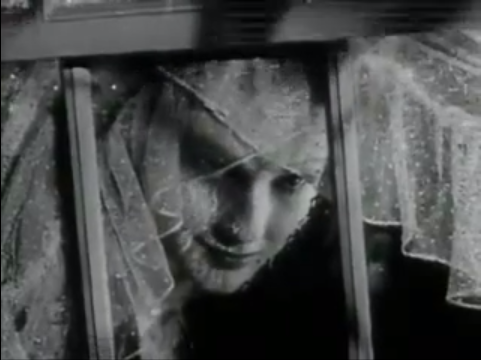
Entire scenes are over-the-top. When the scales are lifted from Douglas’s eyes about Evelyn, they are in darkness in the living room, with only the slightest illumination from an unseen fireplace.
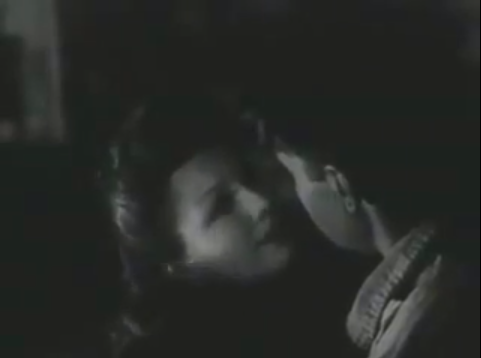
As Evelyn frantically scurries around looking for Lee’s bird, the camera is similarly active, cutting back and forth between her and Aunt Martha, looking up at Evelyn’s legs, then down at her upturned anguished face.
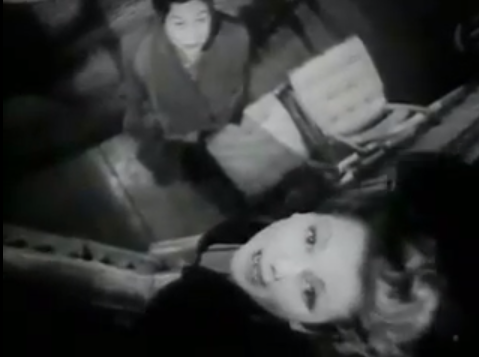
The soundtrack renders Evelyn’s phobia through the noise of fluttering wings.
Guest in the House is a rara avis in film noir: it isn’t a crime story, but it features a femme fatale. Evelyn is destructive to Ann and Douglas materially as well as emotionally. The night Douglas draws a sketch of Evelyn on a lampshade, they get under each other’s skin. Evelyn wants to make him (and the house) hers.
Douglas wants her to model for a church mural. The subject is St. Cecilia, patron saint of the blind, which is fitting since the Proctor household can’t see what Evelyn is really like. Without Miriam and obsessed with the mural, Douglas stops earning money. Soon the family budget is in dire straights.
Ann’s fault for their troubles is to believe Evelyn’s innuendoes about Douglas and Miriam. At a time so many women were entering the labor force, a wife at home could easily fret about her husband carrying on with an attractive co-worker.
Until Evelyn’s arrival, Douglas is amorous with Ann at night, and Ann isn’t bothered about what Douglas and Miriam do together in the day. Although Evelyn insinuates otherwise, the film shows Douglas and Miriam are just professionals and friends. Neither Douglas nor Miriam makes a play for the other, even when he draws her nude, swims with her, squeezes her from behind to loosen up her back, or is drunk with her in his car.
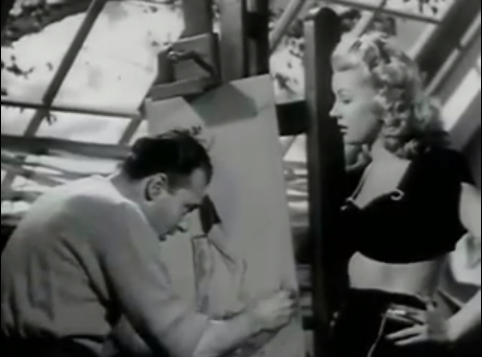
Furious that Ann didn’t have faith in him and frustrated that he can’t finish the mural, Douglas hits the bottle. According to Guest in the House, a wife needs to trust her husband and the women he works with. Ann and Douglas narrowly get through this test of their marriage. With Evelyn’s sinister presence removed, fun will return to the House of Proctor. Douglas will like life again. Being with Ann at night, he will stop drinking himself into a stupor. He will resume working with Miriam, and the family finances will recover.